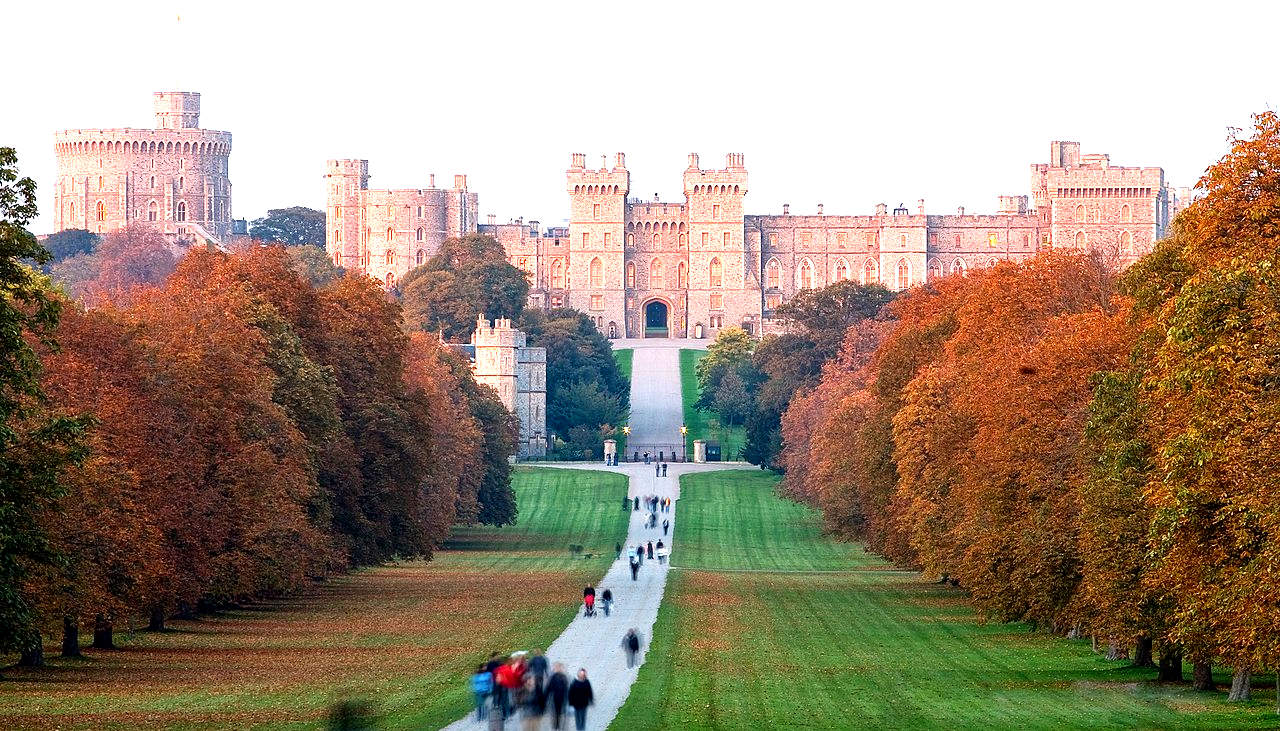
The
Royal Family use Windsor Castle preferentially as a residence, with
Buckingham Palace being the administrative hub in the City of London.
Windsor Castle is a royal residence at Windsor in the English county of Berkshire. It is strongly associated with the English and succeeding
British royal family, and embodies almost a millennium of architectural history.
The original castle was built in the 11th century after the Norman invasion of England by William the Conqueror. Since the time of Henry I (who reigned 1100–1135), it has been used by the reigning monarch and is the longest-occupied palace in
Europe. The castle's lavish early 19th-century State Apartments were described by early 20th century art historian Hugh Roberts as "a superb and unrivalled sequence of rooms widely regarded as the finest and most complete expression of later Georgian taste". Inside the castle walls is the 15th-century St George's Chapel, considered by the historian John Martin Robinson to be "one of the supreme achievements of English Perpendicular Gothic" design.
Originally designed to protect Norman dominance around the outskirts of London and oversee a strategically important part of the
River
Thames, Windsor Castle was built as a motte-and-bailey, with three wards surrounding a central mound. Gradually replaced with stone fortifications, the castle withstood a prolonged siege during the First Barons' War at the start of the 13th century. Henry III built a luxurious royal palace within the castle during the middle of the century, and Edward III went further, rebuilding the palace to make an even grander set of buildings in what would become "the most expensive secular building project of the entire Middle Ages in England". Edward's core design lasted through the Tudor period, during which
Henry VIII and Elizabeth I made increasing use of the castle as a royal court and centre for diplomatic entertainment.
Windsor Castle survived the tumultuous period of the English Civil War, when it was used as a military headquarters by
Parliamentary forces and a prison for Charles I. At the Restoration of the monarchy in 1660,
Charles II rebuilt much of Windsor Castle with the help of the architect Hugh May, creating a set of extravagant Baroque interiors. After a period of neglect during the 18th century, George III and George IV renovated and rebuilt Charles II's palace at colossal expense, producing the current design of the State Apartments, full of Rococo, Gothic and Baroque furnishings.
Queen Victoria made a few minor changes to the castle, which became the centre for royal entertainment for much of her reign. Windsor Castle was used as a refuge by the royal family during the Luftwaffe bombing campaigns of the
Second World War and survived a fire in 1992. It is a popular tourist attraction, a venue for hosting state visits, and the preferred weekend home of
Queen Elizabeth
II.
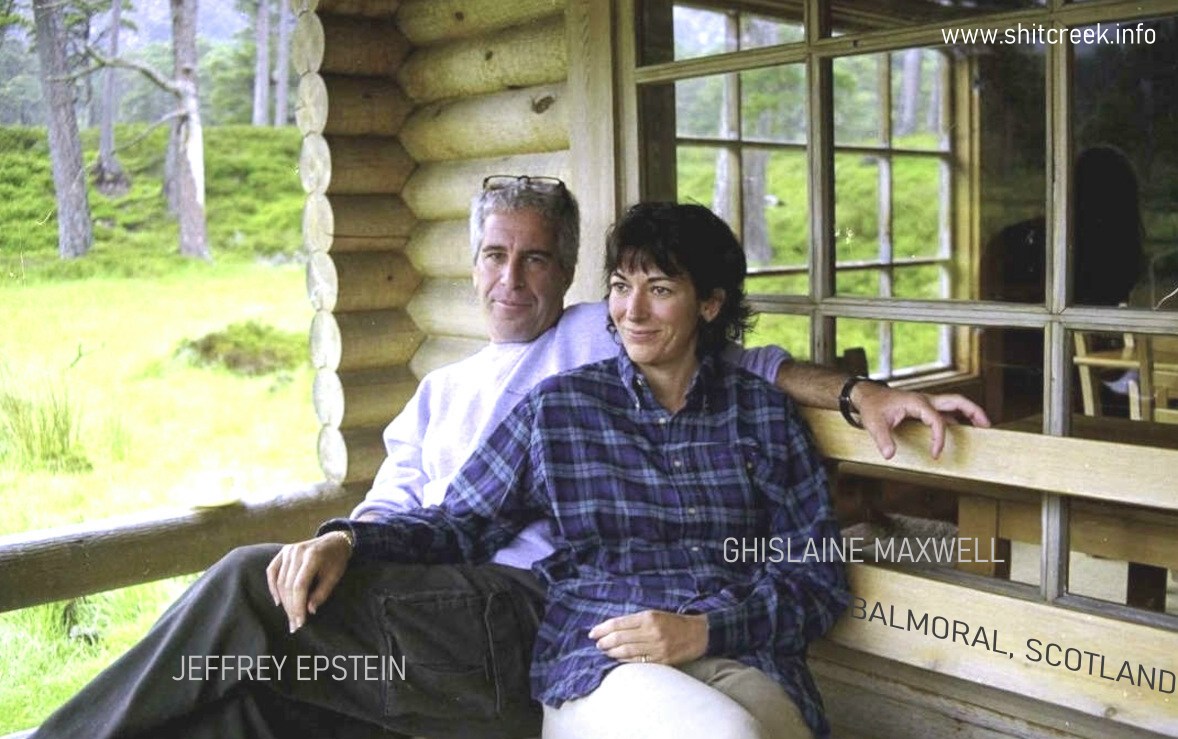
ROYAL
GUESTS - Jeffrey Epstein and
Ghislaine Maxwell seen here at
Balmoral,
the Scottish retreat of the Royals, as guests of Prince Andrew. The
Duke of York stands accused
of sexual assault by Virginia Roberts Giuffre (technically rape) of
a minor in the US, with Ms Maxwell convicted of sex trafficking in
December 2021. Epstein died in prison, thought to have been a suicide,
having been convicted of umpteen sex offences with girls under the age
of consent, making him a very predatory pedophile.
Questions as to any involvement of other Royals, or grooming efforts in
Scotland, remain un-investigated as of January 2022. The picture above
has raised many an eyebrow to (potentially) call the Monarchy into
disrepute, we imagine without justification - save that if what is said
about Ms Maxwell is true, it is unlikely
the pair will not have carried on grooming on their travels. We
understand that Sandringham is mentioned in their little black book.
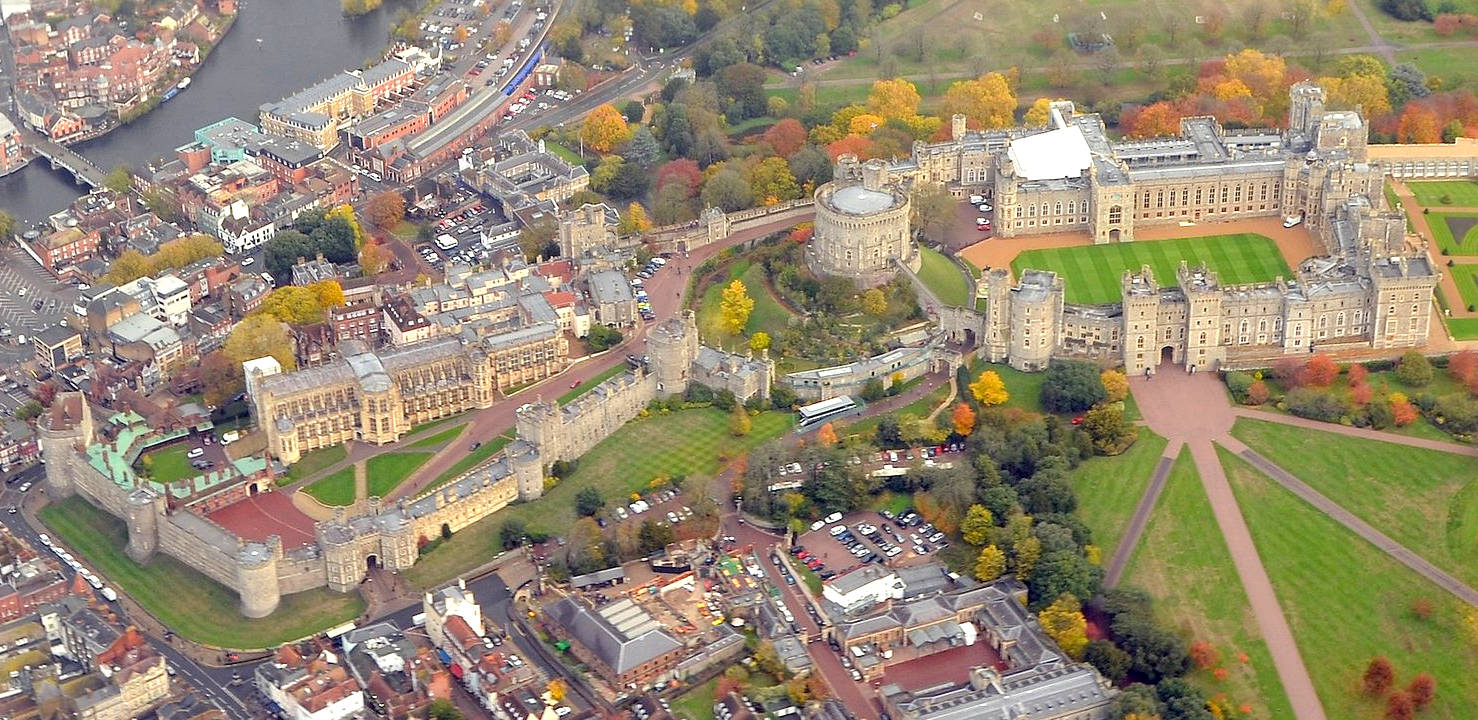
An
aerial picture of Windsor Castle and surrounding estate buildings, with
the River Thames top left.
Windsor Castle was originally built by William the Conqueror in the decade after the Norman conquest of 1066. William established a defensive ring of motte and bailey castles around London; each was a day's march – about 20 miles (32 km) – from the City and from the next castle, allowing for easy reinforcements in a crisis. Windsor Castle, one of this ring of fortifications, was strategically important because of its proximity to both the River Thames, a key medieval route into London, and Windsor
Forest, a royal hunting preserve previously used by the Saxon kings. The nearby settlement of Clivore, or Clewer, was an old Saxon residence. The initial wooden castle consisted of a keep on the top of a man-made motte, or mound, protected by a small bailey wall, occupying a chalk inlier, or bluff, rising 100 ft (30 m) above the river. A second
wooden bailey was constructed to the east of the keep, forming the later Upper Ward. By the end of the century, another bailey had been constructed to the west, creating the basic shape of the modern castle. In design, Windsor most closely resembled Arundel Castle, another powerful early Norman fortification, but the double bailey design was also found at Rockingham and Alnwick Castle.
Windsor was not initially used as a royal residence.
Windsor Castle, part of the Occupied Royal Palaces Estate, is owned by Queen Elizabeth II in right of the Crown, and day-to-day management is by the Royal Household. In terms of population, Windsor Castle is the largest inhabited castle in the world and the longest-occupied palace in Europe, but it also remains a functioning royal home. As of 2006, around 500 people were living and working in the
castle. The Queen has increasingly used the castle as a royal palace as well as her weekend home and it is now as often used for state banquets and official entertaining as
Buckingham Palace. In recent years, Windsor Castle has hosted visits from President Mbeki of
South
Africa, King Abdullah II of Jordan and presidents Barack
Obama, Donald
Trump and Joe
Biden of the United
States. The castle remains an important ceremonial location. The Waterloo ceremony is carried out in the presence of the Queen each year, and the annual ceremony of the Order of the Garter takes place in St George's Chapel. While the Queen is in residence, the Guard Mounting ceremony occurs on a daily basis. The Royal Ascot procession leaves the castle each year during the annual meeting.
During Elizabeth II's tenure much has been done, not only to restore and maintain the fabric of the building, but also to transform it into a major British tourist attraction, containing a significant portion of the Royal Collection of art. Archaeological work has continued at the castle, following on from limited investigations in the 1970s, the work on the Round Tower from 1988 to 1992 and the investigations following the 1992 fire. During 2007, 993,000 tourists visited the castle. This has had to be achieved in co-ordination with security issues and the castle's role as a working royal palace. In late 2011 two large
water turbines were installed upstream of the castle on the
River Thames to provide hydroelectric power to the castle and the surrounding estate. In April 2016, the Royal Collection Trust announced a £27m project to reinstate the original entrance hall of the castle to visitors, as well as a new café in the 14th-century undercroft. The new entrance was opened at the end of 2019. From March 2020, the Queen and her husband,
Prince
Philip, Duke of Edinburgh, shielded at Windsor during the COVID-19 pandemic with a small staff in what became known as 'HMS Bubble' – a jocular reference to the UK Government's rules on household support 'bubbles' during the pandemic. The pandemic also meant that they celebrated
Christmas at Windsor Castle rather than
Sandringham House for the first time since 1987. Prince Philip died at Windsor Castle on 9 April 2021.
On Christmas Day 2021, while the Queen was staying at Windsor Castle, an intruder armed with a crossbow broke into the gardens using a
rope ladder. Before he could enter any buildings the intruder was arrested and later sectioned under the Mental Health Act. He had posted a video on the internet threatening to assassinate the Queen.
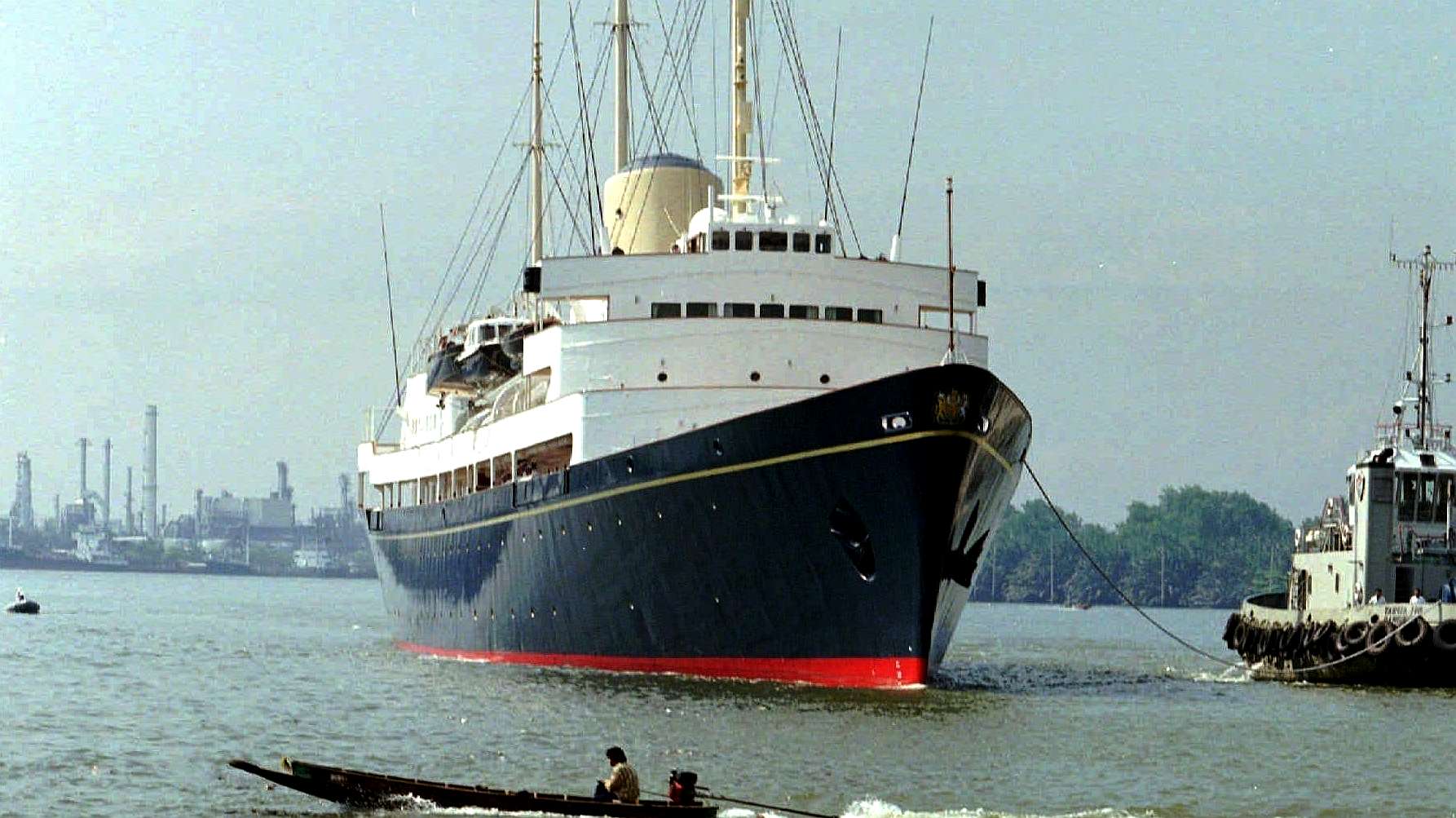
THE
ROYALS AFLOAT - A floating [gin] palace. 83rd in a long line of royal yachts that stretches back to 1660 and the reign of Charles II, BRITANNIA holds a proud place in British maritime history. Plans to build a new royal yacht to replace the VICTORIA AND ALBERT III began during the reign of King George VI. But The King died in 1952, four months before the keel of the yacht was laid. His daughter,
Princess
Elizabeth, succeeded him to the throne and the new Queen, together with her husband,
Prince
Philip, took a guiding hand in the design of the yacht, personally approving plans prepared by Sir Hugh
Casson, Consultant Architect and selecting furniture, fabrics and paintings.
On 11 December 1997, BRITANNIA was decommissioned at Portsmouth Naval Base in the presence of The Queen, The Duke of Edinburgh and fourteen senior members of The Royal Family.
Following BRITANNIA's decommissioning, proposals were put forward by cities around the UK, all competing to secure the ship. In April 1998, the Government announced that Edinburgh had been successful in its bid to bring BRITANNIA to the historic port of
Leith.
If
there is ever another Royal Yacht of such spledour, one hopes it might be solar
assisted and hydrogen powered, by way of an eco ship, to reduce the
carbon footprint of the super rich.
LINKS
& REFERENCE
https://en.wikipedia.org/wiki/Balmoral_Castle
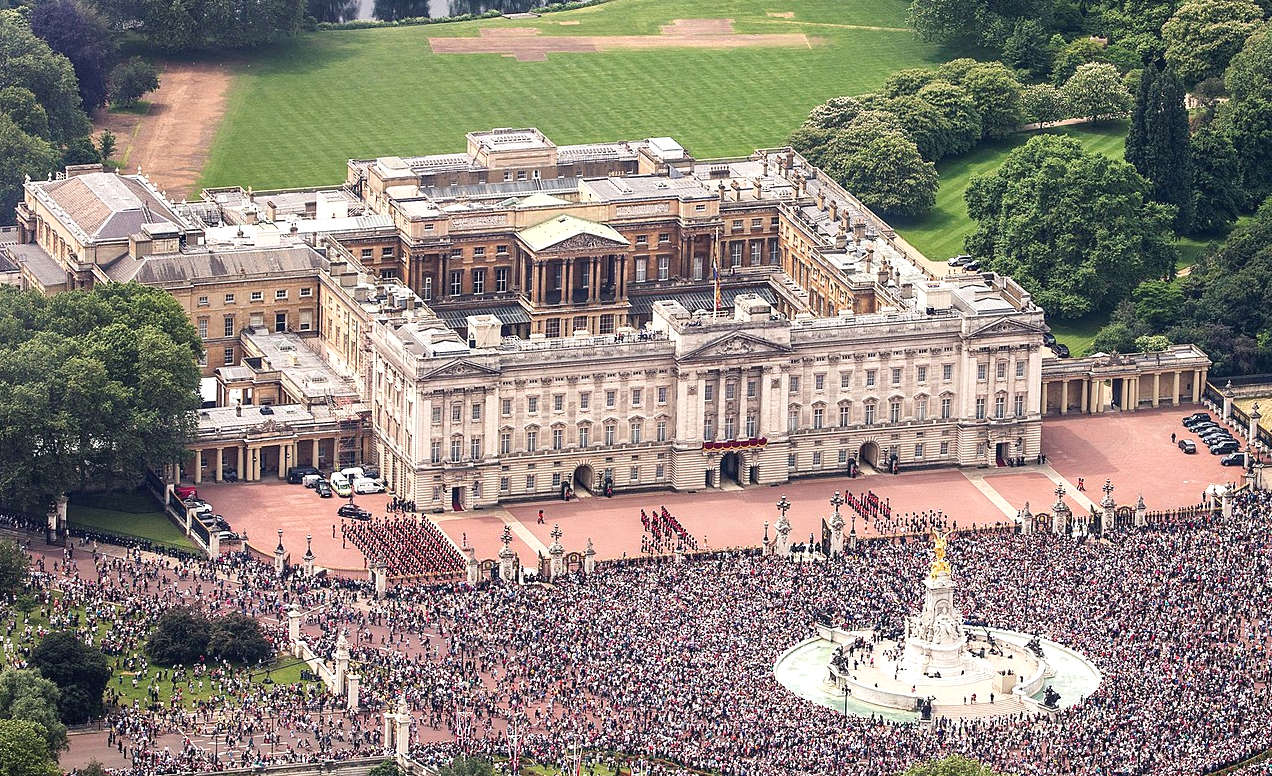
The
Royal Family's London HQ, where most national ceremonies and events take
place.




